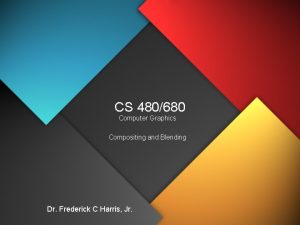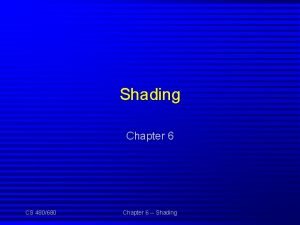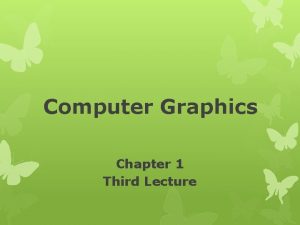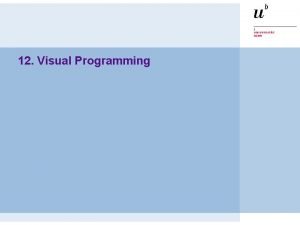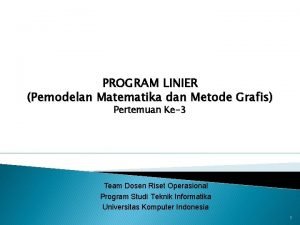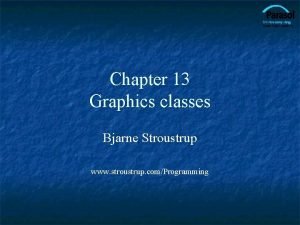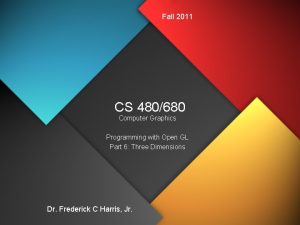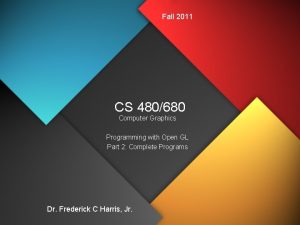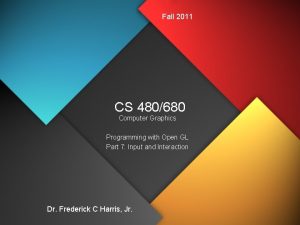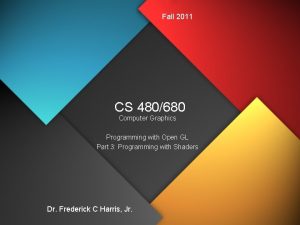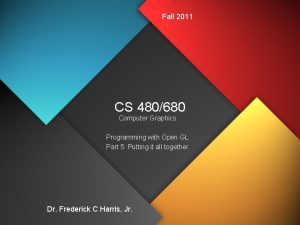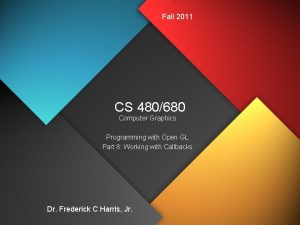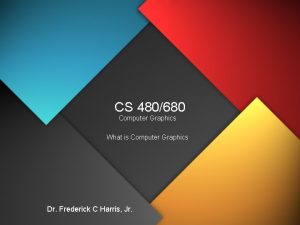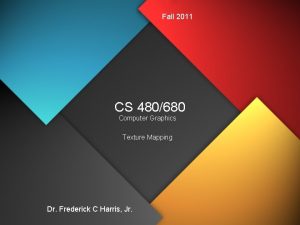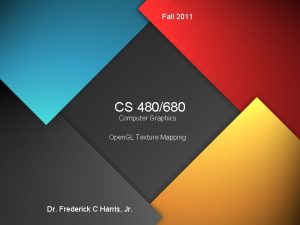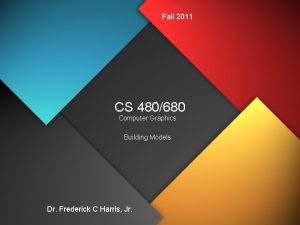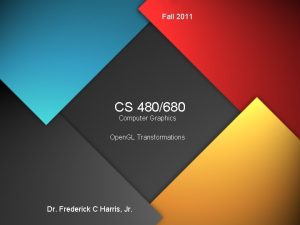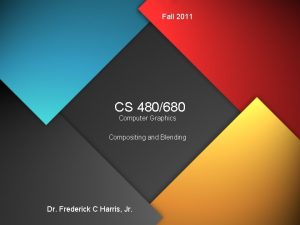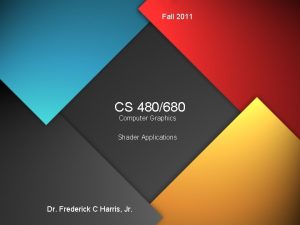Fall 2011 CS 480680 Computer Graphics Programming with















- Slides: 15

Fall 2011 CS 480/680 Computer Graphics Programming with Open GL Part 4: Color and Attributes Dr. Frederick C Harris, Jr.

Objectives • • Expanding primitive set Adding color Vertex attributes Uniform variables

Open. GL Primitives GL_POINTS GL_LINE_STRIP GL_LINE_LOOP GL_TRIANGLES GL_TRIANGLE_STRIP GL_TRIANGLE_FAN

Polygon Issues • Open. GL will only display triangles – Simple: edges cannot cross – Convex: All points on line segment between two points in a polygon are also in the polygon – Flat: all vertices are in the same plane • Application program must tessellate a polygon into triangles (triangulation) • Open. GL 4. 1 contains a tessellator nonsimple polygon nonconvex polygon

Polygon Testing • Conceptually simple to test for simplicity and convexity • Time consuming • Earlier versions assuming both and left testing to the application • Present version only renders triangles • Need algorithm to triangulate an arbitrary polygon

Good and Bad Triangles • Long thin triangles render badly • Equilateral triangles render well • Maximize minimum angle • Delaunay triangulation for unstructured points

Triangularization • Convex polygon d c b a • Start with abc, remove b, then acd, ….

Non-convex (concave)

Recursive Division • Find leftmost vertex and split

Attributes • Attributes determine the appearance of objects – Color (points, lines, polygons) – Size and width (points, lines) – Stipple pattern (lines, polygons) – Polygon mode • Display as filled: solid color or stipple pattern • Display edges • Display vertices • Only a few (gl. Point. Size) are supported by Open. GL functions

RGB color • Each color component is stored separately in the frame buffer • Usually 8 bits per component in buffer • Color values can range from 0. 0 (none) to 1. 0 (all) using floats or over the range from 0 to 255 using unsigned bytels

Indexed Color • Colors are indices into tables of RGB values • Requires less memory – indices usually 8 bits – not as important now • Memory inexpensive • Need more colors for shading

Smooth Color • Default is smooth shading – Open. GL interpolates vertex colors across visible polygons • Alternative is flat shading – Color of first vertex determines fill color – Handle in shader

Setting Colors • Colors are ultimately set in the fragment shader but can be determined in either shader or in the application • Application color: pass to vertex shader as a uniform variable (next lecture) or as a vertex attribute • Vertex shader color: pass to fragment shader as varying variable (next lecture) • Fragment color: can alter via shader code

 480680
480680 Gourand shading
Gourand shading 480680
480680 Graphics monitors and workstations in computer graphics
Graphics monitors and workstations in computer graphics 3d viewing devices in computer graphics ppt
3d viewing devices in computer graphics ppt Programming raster display system in computer graphics
Programming raster display system in computer graphics Realitykit example
Realitykit example Metode grafis
Metode grafis Programming graphics
Programming graphics Perbedaan linear programming dan integer programming
Perbedaan linear programming dan integer programming Greedy algorithm vs dynamic programming
Greedy algorithm vs dynamic programming System programming
System programming Integer programming vs linear programming
Integer programming vs linear programming Definisi linear
Definisi linear Crt in computer graphics
Crt in computer graphics Types of projection in computer graphics
Types of projection in computer graphics
